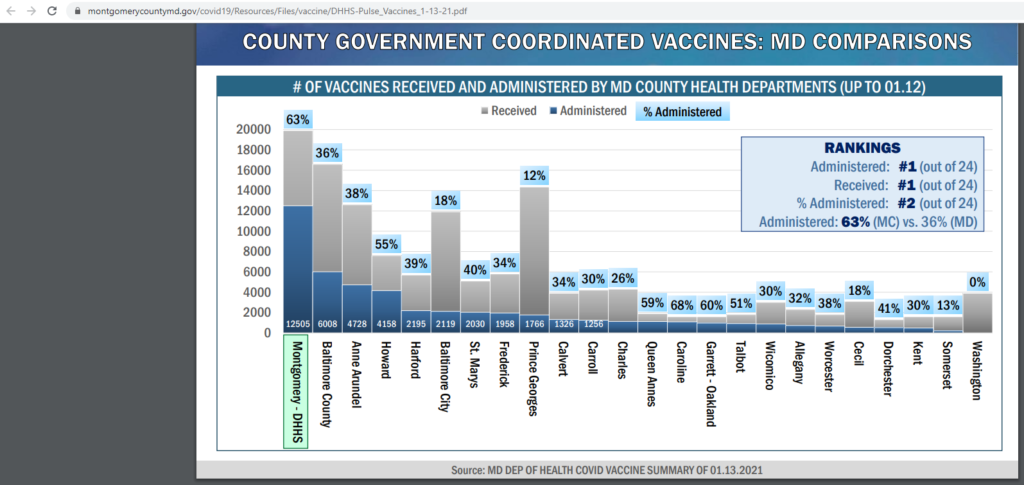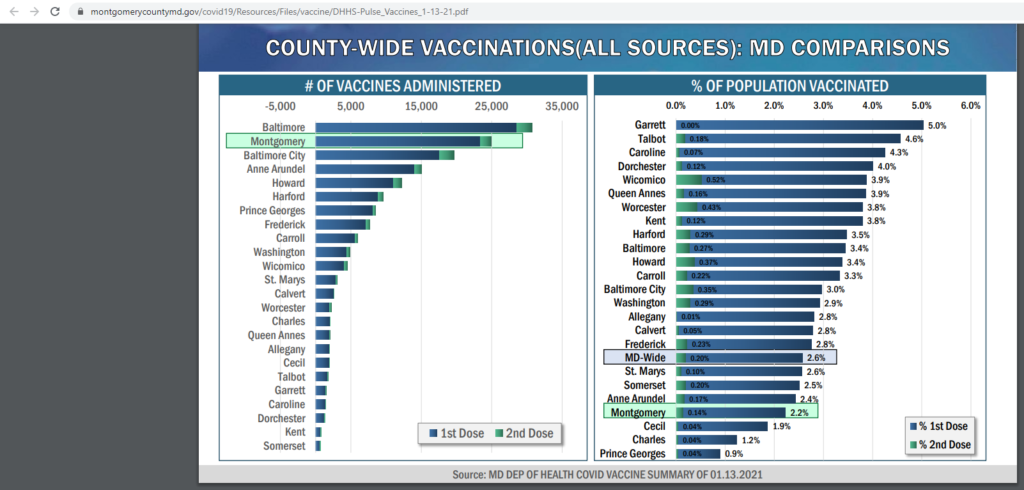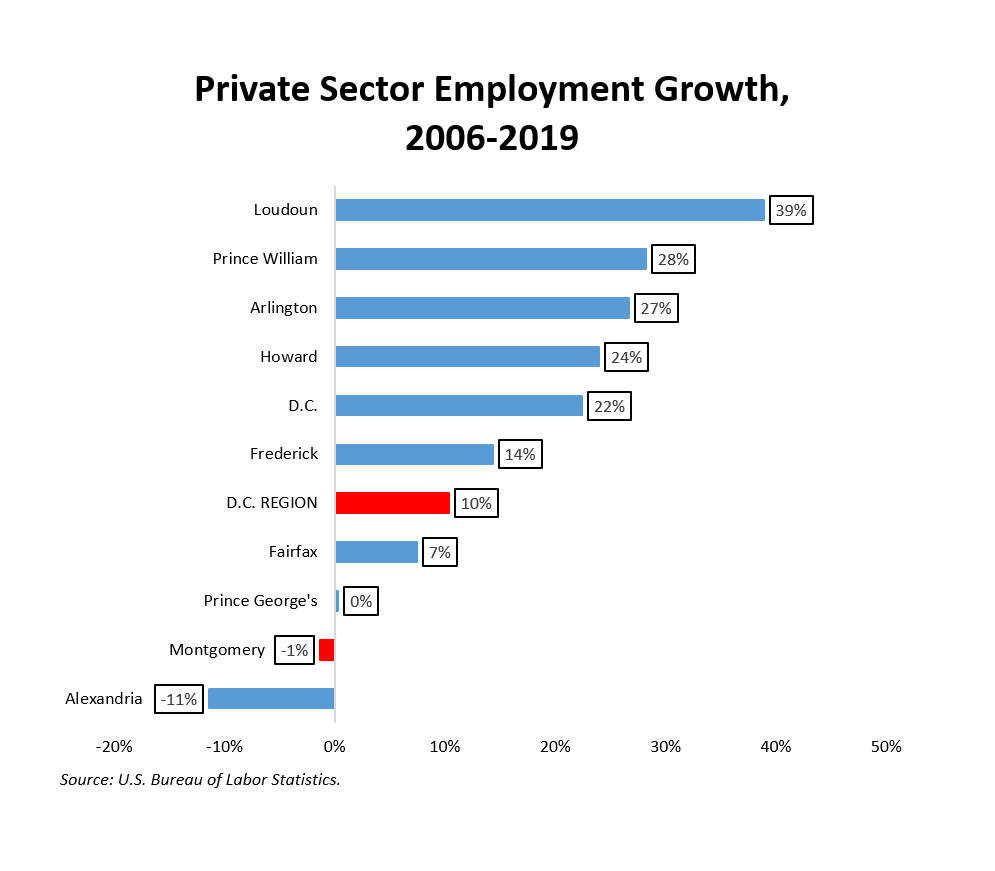By Adam Pagnucco.
Yesterday, the county council’s Office of Legislative Oversight (OLO) released a stunning report on collective bargaining between the county and Fraternal Order of Police (FOP) Lodge 35. The report shows incredible sloppiness by the county in administering labor relations with the police that likely goes back far before the current county executive was in office.
The FOP is one of three unions representing employees of the Montgomery County Government. The other two are the International Association of Fire Fighters Local 1664 and MCGEO. Since 1982, the county has negotiated collective bargaining agreements (CBAs) with the FOP, including many provisions on wages, benefits and working conditions. The OLO report examines bargaining between the county and FOP but does not include the other two unions.
OLO makes many findings of concern, including on issues of transparency. Two major findings leap out of the report.
The county and the FOP did not agree on what their agreement actually was.
OLO wrote:
First, the Executive Branch and the FOP use different versions of the primary agreement and do not agree on a singular document as the primary CBA. Second, the parties also do not agree on which side letters and MOAs [memorandums of agreement] are part of the current agreement and which are not. OLO was told by representatives both in the Executive Branch and from the FOP that the County Government and the FOP have not had a signed collective bargaining agreement for over a decade. OLO has also been told by the Executive Branch that an agreement is in place and the Office of Labor Relations and the FOP are working towards a unified, written document. OLO notes that despite the state of the documents, the parties report that they work together to implement the collective bargaining agreement on a day-to-day basis and use an agreed-upon arbitration process to resolve disagreements, when necessary.
OLO’s primary finding is that it is impossible for a third-party reader to identify the terms and provisions of the collective bargaining agreement between the County and FOP Lodge 35 because the parties do not agree on the primary document. In addition, while the County and the FOP agree that certain side letters and MOAs are in effect, they do not agree on the current status/effect of all side letters and MOAs. This disagreement adds to the inability of a third-party to know or understand all the provisions that make up the collective bargaining agreement.
In other words, MoCo voters have no idea what they’re paying for and, as of the writing of the report, have no way to find out.
An aside. When I was working in the labor movement, I worked with an old, wily jurisdictional director from Brooklyn named Stan. Stan was responsible for negotiating international union agreements with our contractors. Stan had seen every trick in the book over his decades of negotiating. One trick was when company attorneys made changes to agreements that were not negotiated and tried to sneak them in. For example, if the union and the company agreed to changing Articles 12, 15 and 28, the company attorney might insert those changes but also make a change to Article 30. If that change went unnoticed and the union president signed it, that became part of the new agreement.
To stop that kind of thing, Stan would summon me into his office and give me a copy of his version of the agreement. Then he would read aloud from the company’s version – every single word in that New Yawk accent of his – including the sections that had not been renegotiated. If we found one punctuation mark that was out of place, BAM! Stan would be on the phone with the company lawyer, demanding to know how that happened. That’s how much we cared about making sure the agreement was exactly what we agreed to, every single word.
And that’s why I am surprised by the county’s sloppiness here. From my own experience in the labor movement, when the parties don’t agree on what their agreement is, that “agreement” can be hard to administer.
The agreement that expired on June 30, 2020 provided benefit levels that exceeded maximum amounts set in county law.
OLO identified the following examples of benefits in the agreement that exceeded what is allowable under county law.
Agreement: Most current employees contribute 4.75% of salary for retirement.
County law: Employee contributions are set at 6.75% of salary for service after June 30, 2012.
Agreement: The pension cost of living adjustment is tied to the consumer price index with a cap of 7.5%.
County law: The pension cost of living adjustment is tied to the consumer price index with a cap of 2.5%.
Agreement: The minimum pension for a service-connected disability is set at 66.6% of final earnings.
County law: The minimum pension for a service-connected disability is set at 52.5% of final earnings.
Agreement: The health insurance premium split is set at 80% County / 20% employee.
County law: The health insurance premium split is set at 75% County / 25% employee.
The county council made several changes to benefit levels through legislation passed during the Great Recession. The legislation preempts any contents of collective bargaining agreements. It may be that subsequent agreements were not updated to reflect these changes because of the kind of sloppiness seen above. The OLO report authors told me, “FOP members received benefits as stipulated in law and Council resolutions (not what is written in the contracts).”
In responding to the report, Chief Administrative Officer Rich Madaleno wrote, “…The draft report notes that the County and the Fraternal Order of Police (FOP) have been unable to agree upon a unified collective bargaining agreement. This is no longer accurate. OLR [Office of Labor Relations] and the FOP have been engaged in a year-long project to reconcile those differences and have agreed to a single version of the collective bargaining agreement. Attached for your information is the unsigned agreement. The signed version will be forwarded to you next week.”
Unfortunately, the new agreement received by OLO contains the same benefit levels that exceed the maximums contained in county law. That issue has not been cleaned up. Neither have a host of issues I identified last June, the most disturbing of which requires the county to fight certain Maryland Public Information Act (MPIA) requests in court. OLO identified the latter issue as well, writing that that provision appears to conflict with state law.
OLO recommends that all collective bargaining documents, including supplementary ones, be posted on the county’s website for public view; that outdated and/or moot language be purged; that the county council be notified of changes; and that the agreements be consistent with federal, state and county law. Given the county’s past mistakes, these are hard recommendations to argue against.





